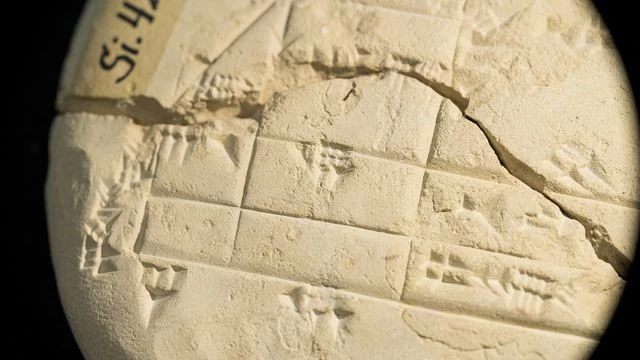A fraction is a straightforward approach to comprehending how to split up whole quantities into separate pieces and then express them numerically. A connection between the numbers that effectively conveys how far a component is from the entire unity is how a fraction is portrayed.
Fractions in Ancient Civilizations
This article explains the mathematical idea of fractions, its background, and how it applies in the contemporary world.
Fractions in The Egyptian Period

Around 1800 B.C., the Egyptians were among the earliest people to study fractions. Fractions were not expressed the same way as they are today. They used unit fractions, which always have a positive integer denominator and a numerator of 1.
The Latin term “fraction,” which means to break, is where the word “fraction” initially originates. The Arabs introduced the “fraction line” between the numerator and denominator.
The Egyptians used what are known as unit fractions to write all of their particles. One serves as the numerator of a unit fraction. To convert a number into a unit fraction, they added a mouth image (which represented a portion) above it.
They were not permitted to repeat a unit fraction in this addition, but they had to represent other fractions as the sum of unit fractions. It is pretty hard to perform any computations using the Egyptian approach for expressing fractions, which is a significant drawback. The Egyptians created several tables to seek solutions to issues to get around this.
It is pretty hard to perform any computations using the Egyptian approach for expressing fractions, which is a significant drawback. The Egyptians created several tables to seek solutions to issues to get around this.
Ancient Rome

Fractions were only written in Ancient Rome using words to express a portion of the total. They were based on the weight unit known as the as. Because one “as” was made up of twelve unciae, fractions were focused on twelfths.
The Romans recorded fractions by employing terms to describe a portion of a whole. The “as” was composed of 12 unica, resulting in particles focused on twelfths. The Romans used words like unica (1/12), tunica (1/24), semis (6/12), and scrupulous (1/144).
Using language to express fractions made calculating with fractions tough, a challenge the Egyptians also confronted.
Babylonians Era

The Babylonians were the first to devise a more logical method of expressing fractions. They accomplished it before the Romans, but there was no communication between the two civilizations. The Babylonians resided in what is today known as Iraq in the Middle East.
Because their number system was built on the number 60, we call it base 60. In other words, they divided numerals into the 60s, while we divided them into tens. They did, however, clump into tens; therefore, there were only two symbols, one for a unit and one for a ten.
The Babylonians just expanded their number system to incorporate fractions in the sixty-tenths place, just as we do for the tenths, hundredths, and so on. However, neither zero nor anything like a decimal point was included in their system. Reading numbers became particularly difficult since they might be construed in various ways.
Reading the numbers was tricky for them at first since they did not understand the idea of zero and did not have anything like a decimal point. It was tough to tell the difference between fractions and whole numbers.
However, the Babylonians created the notion of a zero around 311 B.C. even though they did not yet have a decimal point, which made it difficult for them to differentiate between fractions and entire numbers.
Fractions in The Chinese Region

A notation for fractions comparable to how we report traces and compute with fractions was invented by the Chinese in the year 100 B.C. They also devised a method for comparing quantities using scraps.
The method for doing calculations using fractions was written down in a book that was given, titled Nine Chapters on the Mathematical Art.
The following are the principles supported by this text: how to add fractions, how to reduce particles to their simplest forms, how to multiply fractions, and how to divide fractions using the technique of finding the common denominator.
However, the Chinese did not use incorrect fractions like 6/4 in their calculations. In its place, they would make use of the fractional number 1.2/4.
Indian Contribution
In India, fractions were written quite similarly to how we write them now, with one number (the numerator) placed above another (the denominator). Still, there was no line between the two numbers.
In India, a writing system known as Brahmi served as the basis for developing a system that included nine symbols and a zero.
In traditional Indian notation, fractions were composed of a top number, the numerator, and a bottom number, the denominator. However, there was no line utilized to differentiate between the two numbers.
The Indian mathematician Mahavira developed the “invert and multiplied” method of dividing fractions about 850 AD.
Contribution by Arabs
It was the Arabs who first introduced the line that we currently use to differentiate between the numerator and the denominator. This line was sometimes drawn horizontally and other times at an angle.
Around the year 630 A.D., Arabs began making significant contributions to fractions. Indians and Arabs engaged in commerce, disseminating many ideas and concepts, including particles. The Arabs were the ones who introduced the line, which may either be written horizontally or at an angle.
When adding and subtracting fractions, multiplying fractions, and dividing fractions using two strategies—common denominator and cross multiplication—the Arabs used mathematical principles such as the least common multiple.
Other Honorable Mentions
Fibonacci was the first European to make use of the fraction bar. He lived from 1175 to 1250. His work, Liber Abaci, used considerable sums of unit fractions in various contexts (an Egyptian contribution).
With the publication of his work “The Tenth” in 1585, the Flemish mathematician Simon Steven popularized the use of decimal fractions. People eventually realized that performing mathematical operations with fractions may be simplified by putting them down as decimals instead.
